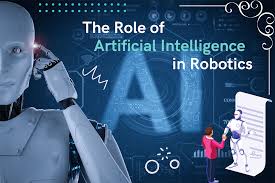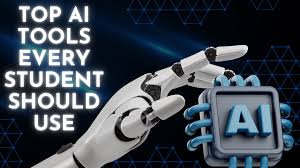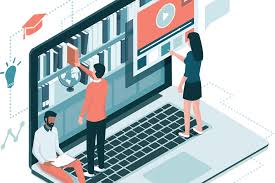
Artificial Intelligence (AI) has made a huge impact across many industries, and one area where it’s truly transforming the future is in robotics. Robotics, once limited to basic tasks and industrial automation, has evolved with the addition of AI. Now, robots can perform more sophisticated tasks, learn from their surroundings, and even adapt to new situations. This blog explores how AI is shaping the future of robotics and its potential to revolutionize various industries.
1. What Is AI in Robotics?
AI in robotics refers to the integration of machine learning algorithms, computer vision, natural language processing, and decision-making capabilities into robots, allowing them to perform tasks that require intelligence and adaptability. Traditional robots were typically pre-programmed with a fixed set of actions, but with AI, robots can now understand their environment, make decisions, and learn from experience, making them far more capable.
2. How AI is Transforming Robotics
a) Autonomous Navigation and Mobility
One of the key advances AI has brought to robotics is the ability for robots to navigate autonomously. AI-powered robots can analyze data from sensors like cameras, LIDAR, and ultrasound to create a map of their environment and make real-time decisions about how to navigate it. This is a game-changer for autonomous vehicles, drones, and robots used in warehouses.
- Example: Companies like Boston Dynamics have developed robots such as Spot, which can navigate complex terrain with minimal human intervention, making it useful for inspections in dangerous or hard-to-reach areas.
b) Human-Robot Interaction
AI enables robots to recognize and respond to human gestures, voices, and actions. This is crucial for robots designed to assist in healthcare, customer service, or home automation. With natural language processing (NLP), robots can understand and converse with humans in a natural, intuitive way, making them more useful in everyday life.
- Example: Robots like Softbank's Pepper can recognize human emotions and respond accordingly, making them ideal for roles in customer service or as companions in elderly care.
c) Robots That Learn from Experience
Incorporating machine learning allows robots to improve their performance over time by learning from their mistakes. Rather than relying on pre-programmed instructions, these robots can gather data, recognize patterns, and adapt their behavior to perform tasks more efficiently.
- Example: AI in manufacturing robots allows them to learn from their actions. If a robot is assembling parts and encounters a new issue, it can analyze the situation, identify the problem, and adjust its approach without human input.
3. AI in Specific Robotics Fields
a) Healthcare and Surgery
AI-powered robots are being used in surgery to assist doctors in performing complex procedures with precision. Robots like the da Vinci Surgical System allow surgeons to control robotic arms with high accuracy, even in minimally invasive surgeries. In addition to surgery, robots are also used in rehabilitation, elderly care, and assistance for people with disabilities.
- Example: Robotic exoskeletons, powered by AI, are being developed to help individuals with mobility impairments walk again.
b) Industrial Robotics
AI is revolutionizing the manufacturing industry. Robots in factories and warehouses are becoming smarter, more efficient, and safer with the introduction of AI. They can now identify defects in products, detect anomalies in equipment, and adjust their tasks based on real-time data.
- Example: Amazon's warehouses employ AI-powered robots for product retrieval, sorting, and packing. These robots communicate with each other to optimize the workflow and ensure rapid delivery.
c) Agricultural Robotics
AI-powered robots are now being used in agriculture to plant seeds, harvest crops, and monitor the health of plants. These robots use AI to identify different types of crops, assess soil conditions, and even detect pests, making farming more efficient and sustainable.
- Example: Robots like the "Agrobot" are designed to harvest strawberries with AI vision systems that can identify ripe fruit, reducing the need for human labor in the field.
4. Ethical Considerations and Challenges
As AI continues to drive innovation in robotics, there are several ethical concerns that need to be addressed.
-
Job Displacement: With robots taking on tasks traditionally performed by humans, there’s a risk of significant job displacement. It’s essential to find ways to integrate robots into the workforce without leaving people behind.
-
Autonomy and Control: In certain fields like military or healthcare, the increasing autonomy of robots raises concerns about decision-making. For example, should a robot be allowed to make life-or-death decisions in a surgical or combat environment?
-
Privacy and Security: As robots become more integrated into our personal lives, like in homes and workplaces, safeguarding data privacy and preventing cybersecurity threats will be critical.
5. The Future of AI in Robotics
The future of AI in robotics is incredibly exciting. We’re just scratching the surface of what’s possible. In the coming years, we may see:
- Smarter robots in healthcare, capable of diagnosing diseases, providing personalized treatments, and even performing complex surgeries autonomously.
- Collaborative robots (Cobots) that can work alongside humans in shared spaces like factories, construction sites, or research labs, assisting with physically demanding tasks.
- Personalized robots that can serve as assistants in homes, offering companionship, help with chores, and more.
6. Conclusion
AI in robotics is not just a technological advancement but a revolution that is shaping our future. From healthcare to manufacturing, education to everyday life, robots powered by AI are changing how we work, live, and interact. While challenges remain, the potential benefits of AI-driven robots are immense. As AI technology continues to improve, the possibilities for robots will only grow, leading to a more efficient, safer, and more innovative world.
What do you think? Are you excited about AI-powered robots in your field? Let us know your thoughts or experiences with robotics in the comments below!

